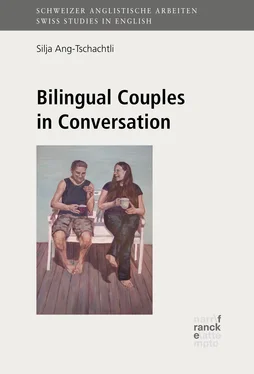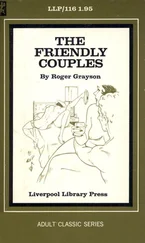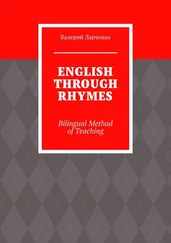As regards the applicability of the findings of this study to other bilingual couplesbilingualcouples, it should be noted that the fact that one partner is a native speaker of English is bound to influence the results, for instance with respect to the partners’ attitudes and language choice. Since English has a very high prestigeprestige internationally, and Swiss German is valued highly within Switzerland, the couples’ place of residence, it is to be expected that the couples evaluate their bilingualism positively. If they lived in another environmentenvironmentdifferent (e.g. in an English-speaking country), or spoke different languages, this would possibly not be the case.15 Furthermore, it should always be kept in mind that the sample includes exclusively couples in which both partners are proficient in the couple language, and very familiar with their partners’ culture; most of them lived in their partners’ country for an extended period of time.16 Due to this selection, the couples only reported a limited range of linguistic and intercultural conflicts. In part, this might also be attributed to the fact that, as has been noted in other studies on couple relationships, couples with serious relationship issues are unlikely to participate in such a study (e.g. Fitzpatrick 1988: 80; Piller 2002a: 45). However, even though the findings of this research cannot be generalized to all bilingual couples, I believe that the focus on extensive interviews with proficient bilingual couples will enable me to draw some firm conclusions on how bilingual couple communication works on an advanced leveladvanced bilingualism.
4.3 Interviewsinterview setting
The couples were interviewed in their place of choice, either at their home or at mine; I avoided public places as I needed excellent recordingrecording quality for the purpose of my study (for instance, to be able to distinguish voice quality). Furthermore, I wanted them to feel as comfortable as possible, so that their conversation would closely resemble their usual manner of speaking to each other, and so that they would feel open to sharing their experiences. Therefore, recording the couples in a laboratory was not an option either. The interviews were recorded digitally with a high-quality stereo recorder. They took place between May 2008 and February 2013 and lasted between a little less than an hour and an hour and a half. This resulted in a corpus of 11.25 hours of conversation (see Table 48 in Appendix II for a detailed overview of the individual recording times). On average, the interviewees spoke 5154 words during the interviews (see Table 49 in Appendix III for a comparison of the number of words and intonation units each participant used during the interviews). The male partners used a greater number of words than the female partners (5529.9 vs. 4777.6 words), and the native speakers of English spoke more than their Swiss partners (5414.1 vs. 4893.3 words). The questions which the couples were asked do not account for this imbalance, as both partners were addressed equally often (see section 4.4, “Questionnaire”, and Appendix I, “Complete questionnaire”).
The interviews were all conducted in English; the couples were encouraged to switch to Swiss German if they felt more comfortable speaking about a certain subject in this language, but they hardly ever chose to do so. Before the interview, I told the couples that I was interested in hearing them speak to each other and discussing the questions from the questionnaire with each other, rather than in having individual answers directed at me. The couples were informed that I was going to write about the manner in which bilingual couples communicate, but they were not told which areas I planned to analyse. Aside from when I asked questions or gave some backchannel signals, I tried to keep in the background during the interviews. Of course, my presence was noticeable nonetheless, and potentially heightened by the fact that I share some essential biographical elements with the couples. I am a native speaker of Swiss German, studied English at university like many of the participants, and like them, I am also in a bilingual relationship. In my opinion, having these things in common was a considerable advantage, as it seemed that many of the interviewees were happy to tell their experiences to someone who could relate to their situation.
4.4 Questionnairequestionnaire
The questionnaire (see Appendix I) was designed with the intention of covering areas that were important to the interviewees’ lives as bilingual, bicultural couples, and of prompting a substantial amount of speech production and interaction between the partners. It includes questions about their relationship history, their language use (inside and outside the home) and their attitudes towards bilingualism, biculturalism and their partner’s language and culture. Furthermore, there were a number of questions concerning the expression of positive and negative emotions, the use of terms of endearment and their swearing behaviour. Because I also wanted to examine how they express positive and negative emotions when conversing together, I asked questions that I expected to trigger a positive reaction (e.g. “What attracted you about each other when you first met?”; “What are the advantages […] of living in a bilingual, bicultural relationship?”) or a negative reaction (e.g. “Were there any initial conflicts?”). I also asked a number of questions that I expected to elicit certain linguistic behaviour from the interviewees, as they would force the couples to negotiate (e.g. “Who is funnier?”; “Who is more polite?”), to criticize or commend each other (“How proficient is your partner in your language?”) or to talk about potentially sensitive subjects (“How do you get along with your extended family?”; “What are your plans for the future?”).
The questionnaire was structured with the objective of making the couples feel relaxed and comfortable from the beginning of the interview. I therefore started with a question that was supposed to encourage them to feel positive about their relationship and hence to speak more freely about it (“How did the two of you meet?”). I then moved on to relatively general questions about their language use and their lives together, before broaching more specific questions and, finally, addressing more sensitive or personal topics. With the help of this structure, I aimed to attain a high level of openness from the participants.
An interview situation with a pre-set questionnaire has many advantages, but also some potential drawbacks. On the one hand, my presence and my questions may have had a slight impact on the naturalness of the conversations. Some of the couples also felt a bit nervous at the beginning, or were slightly anxious about certain questions, which might have had an effect on the way they talked to each other. On the other hand, the questionnaire served to give the conversations a frame and guaranteed that I received the information necessary for the content analysis from the couples. This permitted a comparison between the conversations and the couples’ answers.
4.5 Transcriptiontranscription
The interviews were transcribed using Express Scribe transcription software. Since my analysis required a relatively precise transcription including a number of suprasegmental featuressuprasegmental features, I adapted the comprehensive transcription conventions proposed by Du Bois et al. (1993) to suit the foci of my analysis. I decided to put each intonation unitintonation unit (see below) on a separate line, and to mark the nuclear stressstressesnuclear in each intonation unit with a caret (^). At the end of each intonation unit, its terminal pitchterminal pitch was indicated, such as rising (/), falling (\) or level (_) pitch, as well as glissando pitch movements (/~ \~) and strong riseterminal pitchrises fallterminal pitch (//) and falls (\\). I also included other aspects such as pauses (… for standard pauses and .. for very short pauses), prosodic lengthening (:), strong/contrastive stresses (^^) and elements of conversational organisation, such as overlapoverlap [ ] and latching (=). Some intonation units containedspeechrhythmic rhythmic rhythmic speech speech ( ) — with a beatable rhythm — or marked “marcato” speechmarked speechspeechmarked ( ), with several marked stresses. Vocal noisesvocal noises like tongue clickstongue click ( ), inhalation and exhalation ( ) and laughter ( @) were indicated, too. Different types of non-permanent voice qualityvoice quality were also marked in the transcriptions, for example soft (
Читать дальше












